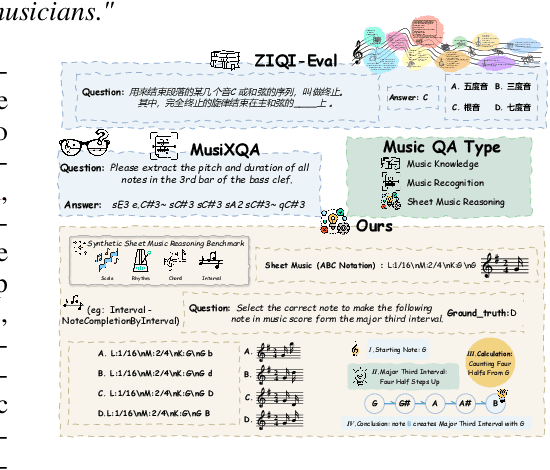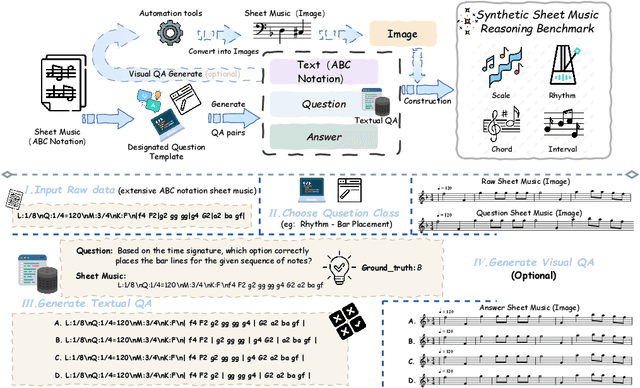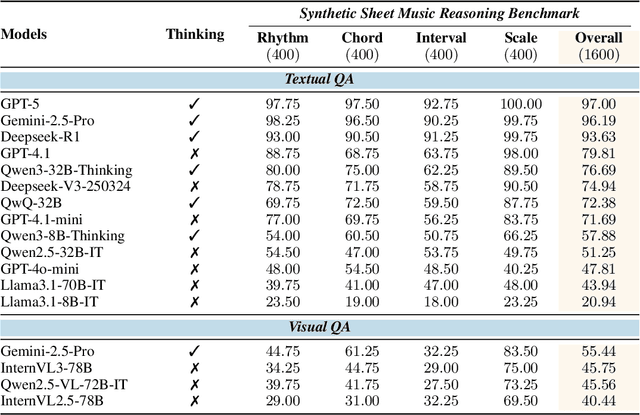Haoran Zhang
Massachusetts Institute of Technology
Explainable AI as a Double-Edged Sword in Dermatology: The Impact on Clinicians versus The Public
Dec 14, 2025Abstract:Artificial intelligence (AI) is increasingly permeating healthcare, from physician assistants to consumer applications. Since AI algorithm's opacity challenges human interaction, explainable AI (XAI) addresses this by providing AI decision-making insight, but evidence suggests XAI can paradoxically induce over-reliance or bias. We present results from two large-scale experiments (623 lay people; 153 primary care physicians, PCPs) combining a fairness-based diagnosis AI model and different XAI explanations to examine how XAI assistance, particularly multimodal large language models (LLMs), influences diagnostic performance. AI assistance balanced across skin tones improved accuracy and reduced diagnostic disparities. However, LLM explanations yielded divergent effects: lay users showed higher automation bias - accuracy boosted when AI was correct, reduced when AI erred - while experienced PCPs remained resilient, benefiting irrespective of AI accuracy. Presenting AI suggestions first also led to worse outcomes when the AI was incorrect for both groups. These findings highlight XAI's varying impact based on expertise and timing, underscoring LLMs as a "double-edged sword" in medical AI and informing future human-AI collaborative system design.
A Vision-Language-Action-Critic Model for Robotic Real-World Reinforcement Learning
Sep 19, 2025Abstract:Robotic real-world reinforcement learning (RL) with vision-language-action (VLA) models is bottlenecked by sparse, handcrafted rewards and inefficient exploration. We introduce VLAC, a general process reward model built upon InternVL and trained on large scale heterogeneous datasets. Given pairwise observations and a language goal, it outputs dense progress delta and done signal, eliminating task-specific reward engineering, and supports one-shot in-context transfer to unseen tasks and environments. VLAC is trained on vision-language datasets to strengthen perception, dialogic and reasoning capabilities, together with robot and human trajectories data that ground action generation and progress estimation, and additionally strengthened to reject irrelevant prompts as well as detect regression or stagnation by constructing large numbers of negative and semantically mismatched samples. With prompt control, a single VLAC model alternately generating reward and action tokens, unifying critic and policy. Deployed inside an asynchronous real-world RL loop, we layer a graded human-in-the-loop protocol (offline demonstration replay, return and explore, human guided explore) that accelerates exploration and stabilizes early learning. Across four distinct real-world manipulation tasks, VLAC lifts success rates from about 30\% to about 90\% within 200 real-world interaction episodes; incorporating human-in-the-loop interventions yields a further 50% improvement in sample efficiency and achieves up to 100% final success.
Reasoning over Boundaries: Enhancing Specification Alignment via Test-time Delibration
Sep 18, 2025Abstract:Large language models (LLMs) are increasingly applied in diverse real-world scenarios, each governed by bespoke behavioral and safety specifications (spec) custom-tailored by users or organizations. These spec, categorized into safety-spec and behavioral-spec, vary across scenarios and evolve with changing preferences and requirements. We formalize this challenge as specification alignment, focusing on LLMs' ability to follow dynamic, scenario-specific spec from both behavioral and safety perspectives. To address this challenge, we propose Align3, a lightweight method that employs Test-Time Deliberation (TTD) with hierarchical reflection and revision to reason over the specification boundaries. We further present SpecBench, a unified benchmark for measuring specification alignment, covering 5 scenarios, 103 spec, and 1,500 prompts. Experiments on 15 reasoning and 18 instruct models with several TTD methods, including Self-Refine, TPO, and MoreThink, yield three key findings: (i) test-time deliberation enhances specification alignment; (ii) Align3 advances the safety-helpfulness trade-off frontier with minimal overhead; (iii) SpecBench effectively reveals alignment gaps. These results highlight the potential of test-time deliberation as an effective strategy for reasoning over the real-world specification boundaries.
Synthesizing Sheet Music Problems for Evaluation and Reinforcement Learning
Sep 04, 2025



Abstract:Enhancing the ability of Large Language Models (LLMs) and Multimodal Large Language Models (MLLMs) to interpret sheet music is a crucial step toward building AI musicians. However, current research lacks both evaluation benchmarks and training data for sheet music reasoning. To address this, we propose the idea of synthesizing sheet music problems grounded in music theory, which can serve both as evaluation benchmarks and as training data for reinforcement learning with verifiable rewards (RLVR). We introduce a data synthesis framework that generates verifiable sheet music questions in both textual and visual modalities, leading to the Synthetic Sheet Music Reasoning Benchmark (SSMR-Bench) and a complementary training set. Evaluation results on SSMR-Bench show the importance of models' reasoning abilities in interpreting sheet music. At the same time, the poor performance of Gemini 2.5-Pro highlights the challenges that MLLMs still face in interpreting sheet music in a visual format. By leveraging synthetic data for RLVR, Qwen3-8B-Base and Qwen2.5-VL-Instruct achieve improvements on the SSMR-Bench. Besides, the trained Qwen3-8B-Base surpasses GPT-4 in overall performance on MusicTheoryBench and achieves reasoning performance comparable to GPT-4 with the strategies of Role play and Chain-of-Thought. Notably, its performance on math problems also improves relative to the original Qwen3-8B-Base. Furthermore, our results show that the enhanced reasoning ability can also facilitate music composition. In conclusion, we are the first to propose the idea of synthesizing sheet music problems based on music theory rules, and demonstrate its effectiveness not only in advancing model reasoning for sheet music understanding but also in unlocking new possibilities for AI-assisted music creation.
Player-Centric Multimodal Prompt Generation for Large Language Model Based Identity-Aware Basketball Video Captioning
Jul 27, 2025Abstract:Existing sports video captioning methods often focus on the action yet overlook player identities, limiting their applicability. Although some methods integrate extra information to generate identity-aware descriptions, the player identities are sometimes incorrect because the extra information is independent of the video content. This paper proposes a player-centric multimodal prompt generation network for identity-aware sports video captioning (LLM-IAVC), which focuses on recognizing player identities from a visual perspective. Specifically, an identity-related information extraction module (IRIEM) is designed to extract player-related multimodal embeddings. IRIEM includes a player identification network (PIN) for extracting visual features and player names, and a bidirectional semantic interaction module (BSIM) to link player features with video content for mutual enhancement. Additionally, a visual context learning module (VCLM) is designed to capture the key video context information. Finally, by integrating the outputs of the above modules as the multimodal prompt for the large language model (LLM), it facilitates the generation of descriptions with player identities. To support this work, we construct a new benchmark called NBA-Identity, a large identity-aware basketball video captioning dataset with 9,726 videos covering 9 major event types. The experimental results on NBA-Identity and VC-NBA-2022 demonstrate that our proposed model achieves advanced performance. Code and dataset are publicly available at https://github.com/Zeyu1226-mt/LLM-IAVC.
MedPAIR: Measuring Physicians and AI Relevance Alignment in Medical Question Answering
May 29, 2025Abstract:Large Language Models (LLMs) have demonstrated remarkable performance on various medical question-answering (QA) benchmarks, including standardized medical exams. However, correct answers alone do not ensure correct logic, and models may reach accurate conclusions through flawed processes. In this study, we introduce the MedPAIR (Medical Dataset Comparing Physicians and AI Relevance Estimation and Question Answering) dataset to evaluate how physician trainees and LLMs prioritize relevant information when answering QA questions. We obtain annotations on 1,300 QA pairs from 36 physician trainees, labeling each sentence within the question components for relevance. We compare these relevance estimates to those for LLMs, and further evaluate the impact of these "relevant" subsets on downstream task performance for both physician trainees and LLMs. We find that LLMs are frequently not aligned with the content relevance estimates of physician trainees. After filtering out physician trainee-labeled irrelevant sentences, accuracy improves for both the trainees and the LLMs. All LLM and physician trainee-labeled data are available at: http://medpair.csail.mit.edu/.
Scaling-up Perceptual Video Quality Assessment
May 28, 2025Abstract:The data scaling law has been shown to significantly enhance the performance of large multi-modal models (LMMs) across various downstream tasks. However, in the domain of perceptual video quality assessment (VQA), the potential of scaling law remains unprecedented due to the scarcity of labeled resources and the insufficient scale of datasets. To address this, we propose \textbf{OmniVQA}, an efficient framework designed to efficiently build high-quality, human-in-the-loop VQA multi-modal instruction databases (MIDBs). We then scale up to create \textbf{OmniVQA-Chat-400K}, the largest MIDB in the VQA field concurrently. Our focus is on the technical and aesthetic quality dimensions, with abundant in-context instruction data to provide fine-grained VQA knowledge. Additionally, we have built the \textbf{OmniVQA-MOS-20K} dataset to enhance the model's quantitative quality rating capabilities. We then introduce a \textbf{complementary} training strategy that effectively leverages the knowledge from datasets for quality understanding and quality rating tasks. Furthermore, we propose the \textbf{OmniVQA-FG (fine-grain)-Benchmark} to evaluate the fine-grained performance of the models. Our results demonstrate that our models achieve state-of-the-art performance in both quality understanding and rating tasks.
Connecting the Dots: A Chain-of-Collaboration Prompting Framework for LLM Agents
May 16, 2025Abstract:Large Language Models (LLMs) have demonstrated impressive performance in executing complex reasoning tasks. Chain-of-thought effectively enhances reasoning capabilities by unlocking the potential of large models, while multi-agent systems provide more comprehensive solutions by integrating collective intelligence of multiple agents. However, both approaches face significant limitations. Single-agent with chain-of-thought, due to the inherent complexity of designing cross-domain prompts, faces collaboration challenges. Meanwhile, multi-agent systems consume substantial tokens and inevitably dilute the primary problem, which is particularly problematic in business workflow tasks. To address these challenges, we propose Cochain, a collaboration prompting framework that effectively solves business workflow collaboration problem by combining knowledge and prompts at a reduced cost. Specifically, we construct an integrated knowledge graph that incorporates knowledge from multiple stages. Furthermore, by maintaining and retrieving a prompts tree, we can obtain prompt information relevant to other stages of the business workflow. We perform extensive evaluations of Cochain across multiple datasets, demonstrating that Cochain outperforms all baselines in both prompt engineering and multi-agent LLMs. Additionally, expert evaluation results indicate that the use of a small model in combination with Cochain outperforms GPT-4.
Towards Optimal Heterogeneous Client Sampling in Multi-Model Federated Learning
Apr 08, 2025Abstract:Federated learning (FL) allows edge devices to collaboratively train models without sharing local data. As FL gains popularity, clients may need to train multiple unrelated FL models, but communication constraints limit their ability to train all models simultaneously. While clients could train FL models sequentially, opportunistically having FL clients concurrently train different models -- termed multi-model federated learning (MMFL) -- can reduce the overall training time. Prior work uses simple client-to-model assignments that do not optimize the contribution of each client to each model over the course of its training. Prior work on single-model FL shows that intelligent client selection can greatly accelerate convergence, but na\"ive extensions to MMFL can violate heterogeneous resource constraints at both the server and the clients. In this work, we develop a novel convergence analysis of MMFL with arbitrary client sampling methods, theoretically demonstrating the strengths and limitations of previous well-established gradient-based methods. Motivated by this analysis, we propose MMFL-LVR, a loss-based sampling method that minimizes training variance while explicitly respecting communication limits at the server and reducing computational costs at the clients. We extend this to MMFL-StaleVR, which incorporates stale updates for improved efficiency and stability, and MMFL-StaleVRE, a lightweight variant suitable for low-overhead deployment. Experiments show our methods improve average accuracy by up to 19.1% over random sampling, with only a 5.4% gap from the theoretical optimum (full client participation).
Dynamic Hedging Strategies in Derivatives Markets with LLM-Driven Sentiment and News Analytics
Apr 05, 2025Abstract:Dynamic hedging strategies are essential for effective risk management in derivatives markets, where volatility and market sentiment can greatly impact performance. This paper introduces a novel framework that leverages large language models (LLMs) for sentiment analysis and news analytics to inform hedging decisions. By analyzing textual data from diverse sources like news articles, social media, and financial reports, our approach captures critical sentiment indicators that reflect current market conditions. The framework allows for real-time adjustments to hedging strategies, adapting positions based on continuous sentiment signals. Backtesting results on historical derivatives data reveal that our dynamic hedging strategies achieve superior risk-adjusted returns compared to conventional static approaches. The incorporation of LLM-driven sentiment analysis into hedging practices presents a significant advancement in decision-making processes within derivatives trading. This research showcases how sentiment-informed dynamic hedging can enhance portfolio management and effectively mitigate associated risks.
 Add to Chrome
Add to Chrome Add to Firefox
Add to Firefox Add to Edge
Add to Edge